Do large tiles work in small bathrooms
What Size Tile Should You Use in a Small Bathroom?
You spend a lot of time each day in your bathroom, so creating a functioning, bright and inviting space is very important. One design problem a lot of homeowners run into is how to select the right tile for their bathroom floor, particularly when the room is on the smaller side.
A small bathroom can feel cramped, and choosing the wrong size tile can make it seem even smaller. You want to design the space in a way that opens up the room and tricks your eyes into thinking it is larger.
When selecting options for bathroom tile installation in Flint, MI, follow these few design tips to ensure your space feels roomy, not tiny.
Size considerations will differ
Tile size is one of the most important factors when it comes to making a small room look bigger, but it is also one of the trickiest to nail down. Many designers have differing opinions on what size tile should go in a small room, but the answer will really depend on your unique space.
It’s usually a good idea to avoid using very large tiles on your bathroom floor if the room is small. Large tiles can make the space seem smaller. However, in some instances, large tile is appropriate. Square or rectangular bathrooms can usually accommodate a light or neutral-colored large tile.
For more angular or strangely-shaped bathrooms, small or mosaic tiles may be more appropriate. If you use small tiles, you need to remember that there will be many more grout lines, which can stand out and create additional visual clutter. You can avoid this by using tiles that match the grout color to create a more uniform appearance.
While some bathrooms can look great with large and small tiles, your best bet to enlarge a small bathroom is to opt for a medium-sized tile, no larger than 1’ x 1’.
The best way to decide what size tile will work in your space is to bring home samples prior to tile installation in Flint, MI. While a sample won’t provide a perfect visualization, it can help give you an idea of what your bathroom floor will look like.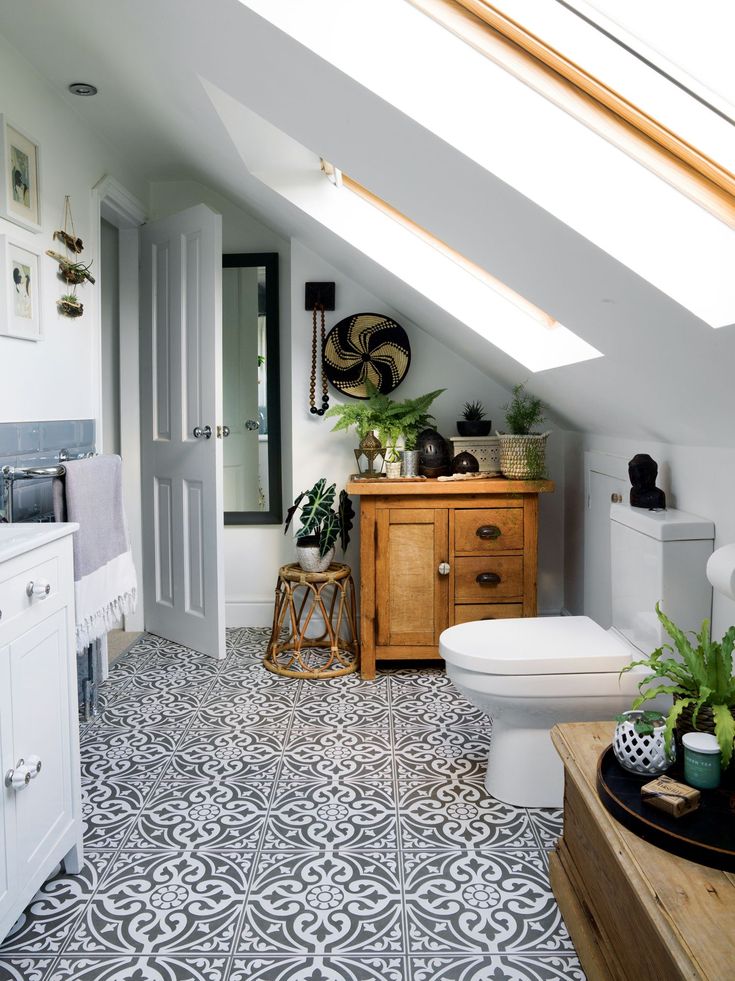
Other tile design factors
While tile size can make a big difference in the appearance of your small bathroom, it is not the only important factor. Other choices in style, color and layout can make tiles of any size work in a small space:
- Neutral colors: We recommend that you choose tiles in a light, neutral color if you’re flooring a small space. This is because colors like white, cream or light gray help amplify the space by bouncing light around the room.
- Diagonal patterns: Laying tiles in a diagonal pattern instead of linearly with the room can create an illusion of more space. Chevron patterns can also create an interesting visual while elongating the space.
- Rectangular tiles: Similar to how diagonal patterns elongate rooms, rectangular-shaped tiles can make a rectangular room seem much longer.
Still not sure of which type of tile to put in your small bathroom? Visit Glenn’s Tile and Carpet and speak to one of our tile experts for assistance in picking the perfect option. We stock a vast selection of tile and also offer tile installation in Flint, MI. Call today for a free estimate!
We stock a vast selection of tile and also offer tile installation in Flint, MI. Call today for a free estimate!
Categorised in: Tile Installation
Tiling a Small Bathroom - Dos and Don'ts
Photo: Zillow Digs home in Phoenix, AZ
Thanks to the abundance of design and colors on the market today, choosing tiles that can visually expand a small space is easier than ever. Whether you select mosaics, large tiles, or a combination of sizes, keep in mind tile installation is usually permanent and can be costly in terms of both materials and labor. Choosing the correct tile for your small bathroom requires careful planning. As projects go, tiling a small bath isn’t exactly a quick and easy task, but if you are patient and diligent it can be a very rewarding experience. Before you invest in any materials, consider the following guidelines to help avoid an expensive mistake.
Do Carefully Measure the SpaceAccurate measurements are a crucial first step in any tile project, but especially in the likely awkward layout that is your cramped bathroom.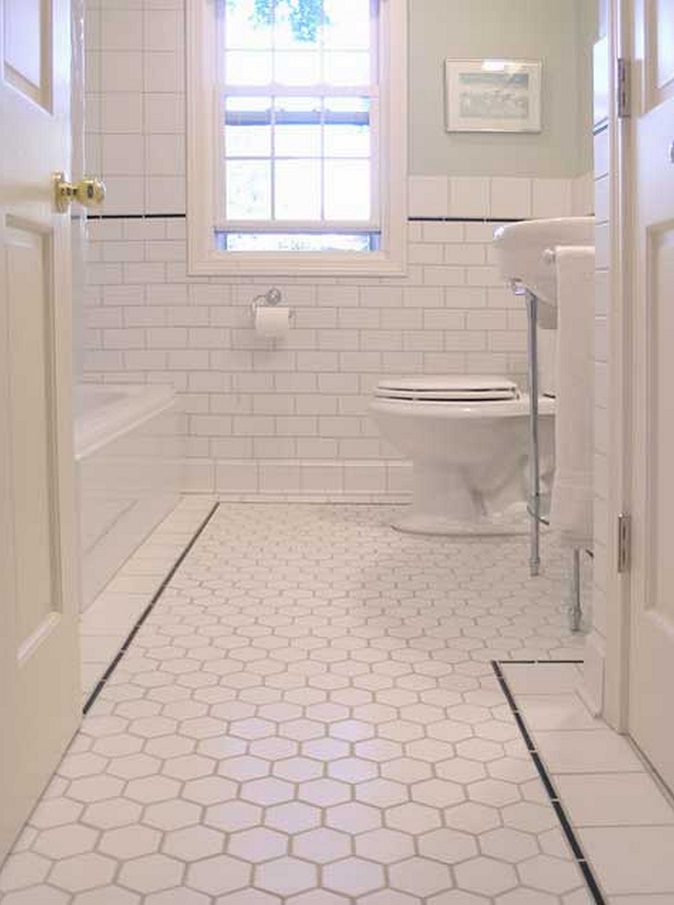 Any mistakes here can lead to conspicuous design problems. When calculating the amount of tile needed for floors or walls, multiply the length of the area you are covering by the width to find the square footage. Then you’ll want to add extra footage for waste. The exact amount of waste will depend on your tile size and the configuration, but 15 percent (up to 20 percent, in cases where the space has lots of corners or a diagonal layout) of the calculated square footage is a safe bet. Double-check your numbers before ordering.
Any mistakes here can lead to conspicuous design problems. When calculating the amount of tile needed for floors or walls, multiply the length of the area you are covering by the width to find the square footage. Then you’ll want to add extra footage for waste. The exact amount of waste will depend on your tile size and the configuration, but 15 percent (up to 20 percent, in cases where the space has lots of corners or a diagonal layout) of the calculated square footage is a safe bet. Double-check your numbers before ordering.
Remodeling your bathroom?
Get free, no-commitment project estimates from pros near you.
Find local pros
+Photo: Zillow Digs home in Seattle, WA
Don’t Scrimp When Buying TilesWhy invest in so much tile as part of the waste factor? Remember: Running out of materials on any job can be very frustrating. Having to stop mid-job to regroup is bad enough, but—in an even worse case scenario—you might find that the store is out of your particular tiles. Ordering tiles 15 to 20 percent more than you expect to use will help ensure against miscalculations, breakages, and cutting odd sizes to fit the space. It’s also a good idea to have spare tiles in reserve should any tiles become cracked or damaged in the future. Check to see if your retailer will allow refunds for unused tiles or unopened boxes, or start dreaming up projects to make with the spares.
Ordering tiles 15 to 20 percent more than you expect to use will help ensure against miscalculations, breakages, and cutting odd sizes to fit the space. It’s also a good idea to have spare tiles in reserve should any tiles become cracked or damaged in the future. Check to see if your retailer will allow refunds for unused tiles or unopened boxes, or start dreaming up projects to make with the spares.
In addition to injecting your bathroom with the look and feel of a professional spa, covering your space in mosaic tiles also visually expand limited square footage in the bathroom. One-inch tiles on walls, floors, shower enclosures, and even ceilings fool the brain into thinking the space is larger just because there are so many round or square tiles lined up. When choosing mosaic tile from the wide variety of colors and styles on the market, consider glass. Glass mosaics will reflect light around the walls and ceiling, which in turn creates the illusion of a deeper, wider, and overall larger room.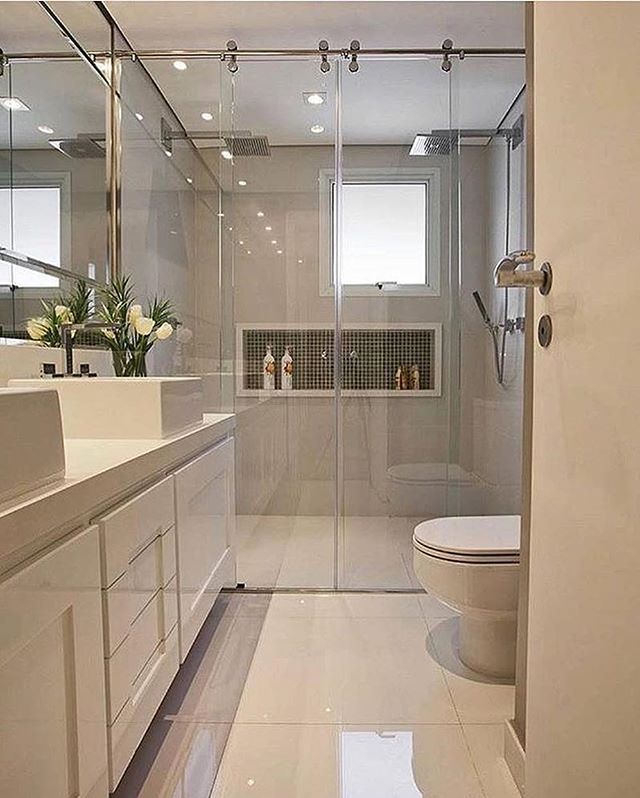
Advertisement
Photo: Zillow Digs home in Brooklyn, NY
Don’t Underestimate Large TilesWe don’t mean to suggest that you can’t fit large tiles into the scheme of your small bath. Quite the contrary! Just like small, 1-inch tiles, large tiles can actually make the small space appear larger. Here’s how it works: Our brain associates big tiles with a large space, so seeing them in a smaller setting tricks us it into thinking the room is larger than we know it to be. If you’re ready to adopt an extra-large tile treatment on your floors, consider, for additional impact, continuing them up the walls to the height of a chair rail.
Do Keep It SimpleTiling with several colors and bold patterns in a small bathroom can overwhelm the space and make it seem even more cramped than its actual size. Choosing a single light color for the floors and walls, however, makes the tiny room appear more spacious. If you prefer variety, select soft-hued colors that are a few shades lighter or darker than each other and consider smaller-scale design to keep with the size of the room.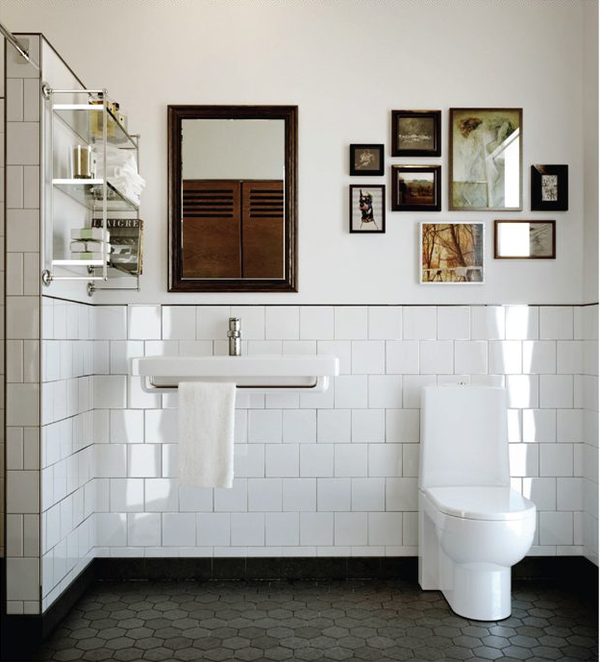
Be sure that the surface on which you are working is clean, smooth, and solid. Otherwise, soft floors cause tiles to crack or loosen and uneven walls allow moisture to get behind tiles causing them to loosen and fall off—not exactly what you want to see soon after completing a labor-intensive project. In addition to leveling any uneven surface, also be sure to always remove wallpaper from walls and sand the surface before applying tiles.
Do Set Tiles in a Diagonal PatternHere’s another optical illusion that can work in your favor: Tiles set in a diagonal pattern across the floor can help a small bathroom be perceived as larger than its actual size. This layout places emphasis on the length and width simultaneously. Intrigued? Just know that diagonal tile patterns require more planning, precise measuring, and cutting—especially around the perimeter of the room. Before starting, you’ll use graph paper to lay out a scaled diagram of your floor. After measuring, marking the floor, and cutting the tiles, installation is fairly straightforward.
After measuring, marking the floor, and cutting the tiles, installation is fairly straightforward.
Advertisement
Don’t Use Shiny Tiles on a FloorWhile glossy tiles and polished stone can look very luxurious, skip these materials for bathroom flooring. The sheen of these surfaces are slick to the touch—add a splash of water outside the tub or excess soap in the bottom of your shower, and they can be downright slippery. Fortunately for you, tiles are rated according to their slip resistance so that you know exactly what belongs where in order to minimize risk of falls. Check with your retailer before buying to make sure your choice is suited to the purpose.
Remodeling your bathroom?
Get free, no-commitment project estimates from pros near you.
Find local pros
+Tiles for a small bathroom, design (45 photos)
The most popular finishing material for a bathroom is ceramic tiles, because it is practical, unpretentious in care and resistant to moisture. A huge range of tiles includes products of various sizes and colors, which allows you to select the most suitable material for decorating a room, based on its geometric features. Small bathrooms are especially difficult to decorate, because for them it is necessary to choose tiles more carefully, both in color and in size, in order to visually expand the space. nine0003
A huge range of tiles includes products of various sizes and colors, which allows you to select the most suitable material for decorating a room, based on its geometric features. Small bathrooms are especially difficult to decorate, because for them it is necessary to choose tiles more carefully, both in color and in size, in order to visually expand the space. nine0003
Attention to color
When designing rooms with a small area, you should try to visually enlarge them, so it is recommended to use light-colored finishes. But it should be noted that the cladding of walls and floors with exclusively white ceramic tiles will be inappropriate, because. this will cause associations with a medical institution. In addition, this solution will not give the effect of expanding the space, but simply enhance the illumination of the bathroom.
White tiles are best used with materials of other tones:
- light blue or light blue;
- muted green or light green;
- light yellow or pale lemon;
- peach;
- lavender;
- sand;
- terracotta;
- pearl grey.
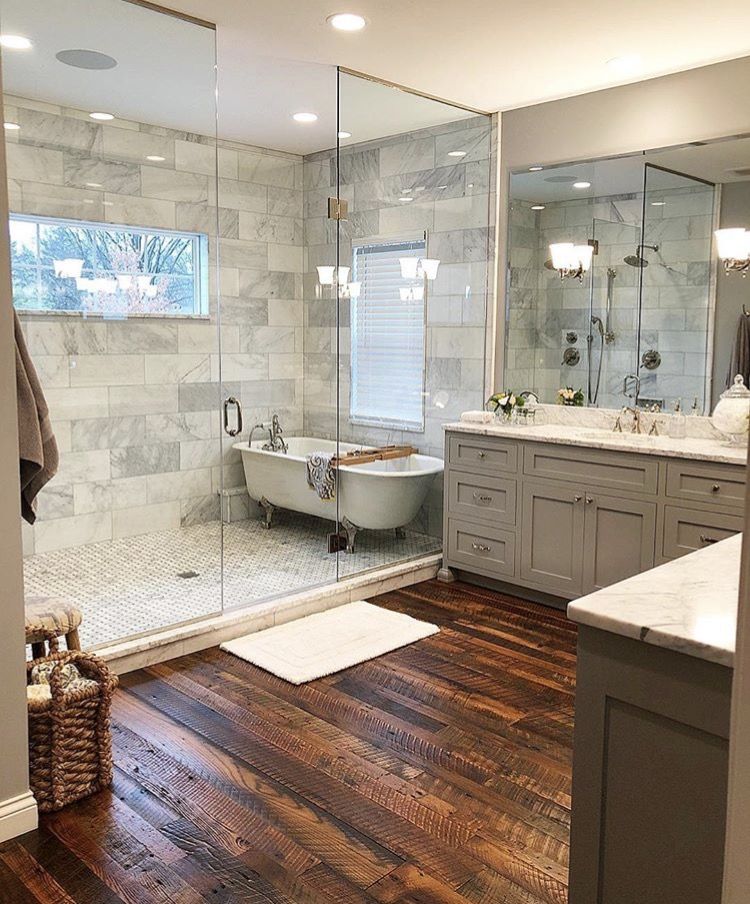
Despite the small dimensions of the bathroom, in addition to light tiles, you can also use dark tiles if you choose the right shades. For example, muted dark blue elements, or marsala colors, will add depth to the interior, and at the same time will not negatively affect the geometry of the room. It is important to consider that limescale will be visible on a dark tile, so it requires more careful maintenance. nine0003
Bright inclusions will help to enliven the light interior of the bathroom, and the tiles can be not only plain, but also with a pattern. It is best to use such a finishing material in the form of a border, several vertical stripes, or even mark contrasting elements in a chaotic manner.
Color combinations
To create a harmonious interior for a small bathroom, you need to choose the right combination of colors for finishing materials. nine0003
All shades are divided into 3 categories:
- cold - blue, light purple, olive;
- warm - peach, sand, beige, light yellow;
- neutral - light gray, white, lilac, pink.
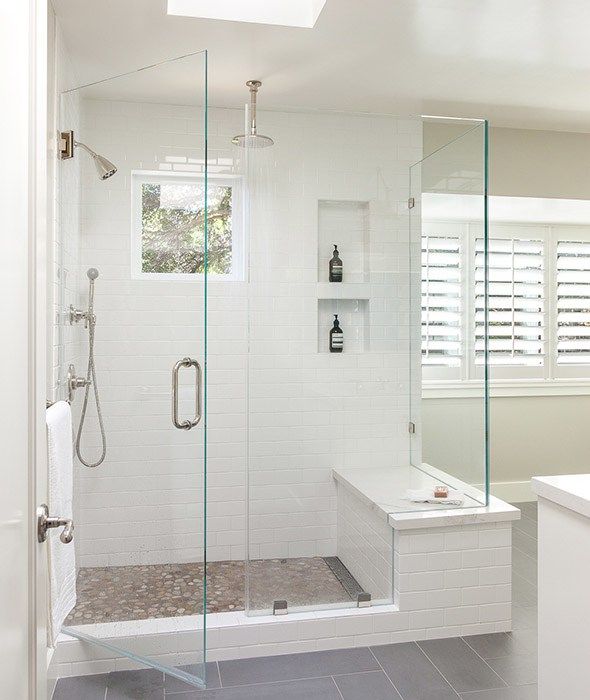
It is not recommended to combine warm and cold colors in the room, but they can be diluted with neutral colors. When planning to finish the bathroom with tiles of two colors, it is important to select them in such a way that they do not contrast, but complement each other. In addition, the lightest shade should be predominant, so it should cover most of the room. nine0003
The best combinations are:
- blue and light blue;
- pink and soft purple;
- white and light gray;
- beige and ivory.
For very small bathrooms, choose ceramic tiles of the same color but in different shades. Smaller walls are lined with lighter materials, and large ones with darker ones. Thus, you can visually change the geometry of the room. To increase the space, it is also recommended to use horizontal lines tiled in dark colors, and to make the ceilings appear higher, the lines should be vertical. nine0003
nine0003
Is it appropriate to have large tiles in a small bathroom?
When choosing a tile for finishing a small-sized bathroom, you should pay attention not only to its color, but also to its size. Many consumers believe that in this case, large elements will be inappropriate, but, according to designers, large tiles may well be used in the interior of the bathroom.
The correct arrangement of large tiles allows you to visually enlarge the room, but you should not cover the entire wall with them. A vertical strip of large squares or rectangles on a larger wall, for example, in the center, will look much better. As for the floor, a large tile would be an impractical solution, because. it will have to be cut. nine0003
The optimal size of tiles for finishing the floor and walls in the bathroom is medium, which is 20x20 and 20x30 cm. The choice of tiles will depend on the geometric features of the room. If the bathroom is rectangular, then it is recommended to use 20x30 cm products for decoration, and 20x20 cm for a square one.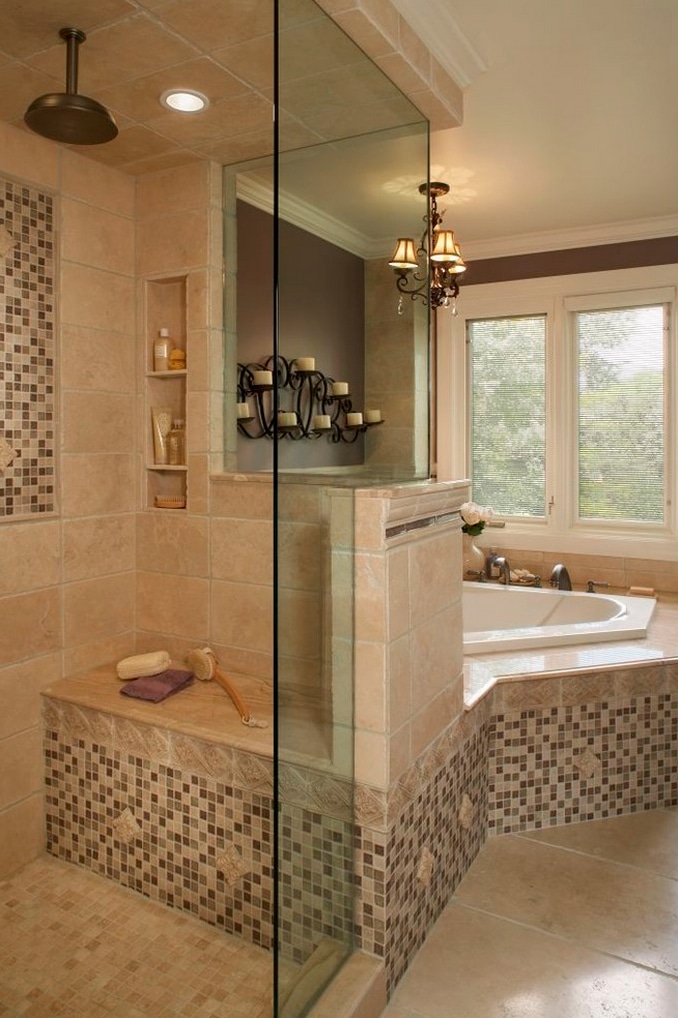 Experienced craftsmen say that the right tile in size and shape allows you to achieve a more pronounced effect of expanding the space than when choosing a good color scheme. nine0003
Experienced craftsmen say that the right tile in size and shape allows you to achieve a more pronounced effect of expanding the space than when choosing a good color scheme. nine0003
Decor
Any interior should have decorative elements that enliven the design and give a sense of completeness.
In the bathroom, this task can be performed using the following materials:
- tile with a relief texture - it can imitate natural stone, brick, fabric;
- mosaic in contrasting color, or with glass, metal and mirror details;
- tiles with a pattern - they can be used individually or as decorative stripes; nine0014
- mirror products - they should be used in small quantities, and in no case should they be faced with the entire wall;
- grouting - it should not only be neat, but also match the color of the tile;
- decorative frieze or borders are widely used elements that bring some zest to the interior.
When choosing a decor, it is necessary to take into account the color scheme of the main ceramic tiles, as it should complement the design, and not stand out from the overall concept.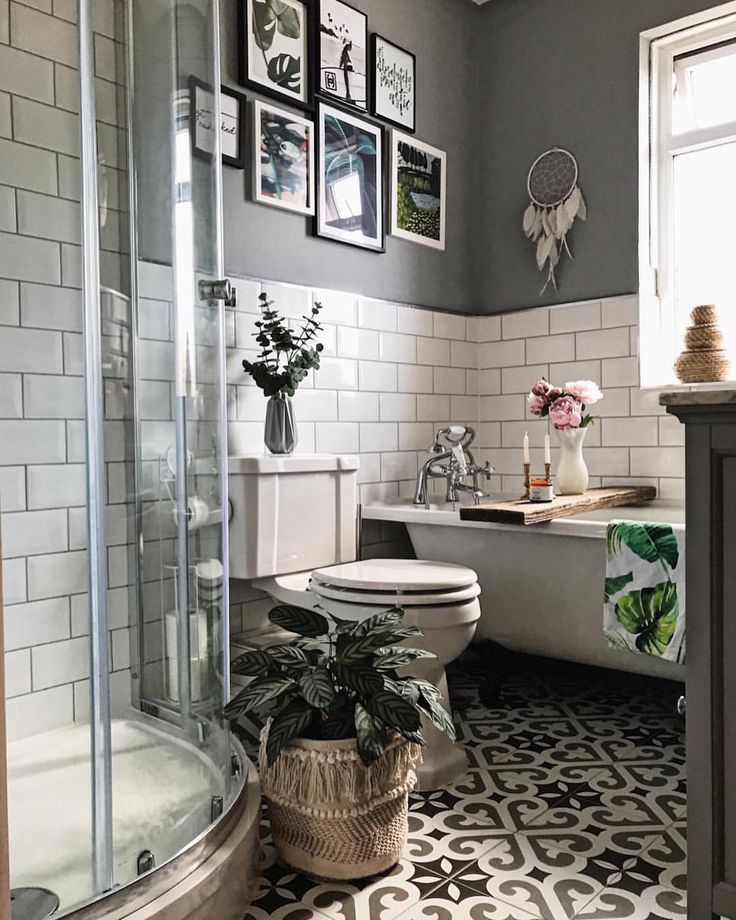 Shiny details in gold and silver look attractive, but too much of them can spoil the overall picture. nine0003
Shiny details in gold and silver look attractive, but too much of them can spoil the overall picture. nine0003
Selection tips
Choosing a good ceramic tile for finishing a small bathroom is not an easy task, especially if the consumer has not previously done repairs on his own.
Before you go shopping for finishing materials, it is recommended to read the advice of experienced craftsmen and designers:
1. Most of the room should be lined with light-colored tiles to visually enlarge the space. If there is a desire to use dark tones, then they should be used to finish the lower part of the walls or floor. nine0003
2. For a small bathroom, it is better to choose glossy finishing materials, because. they have a mirror effect. The only downside is that shiny dark tiles will show water marks, so they need to be cleaned frequently.
3. In the design of a bathroom with a small area, it is not recommended to use more than 3 colors.
4.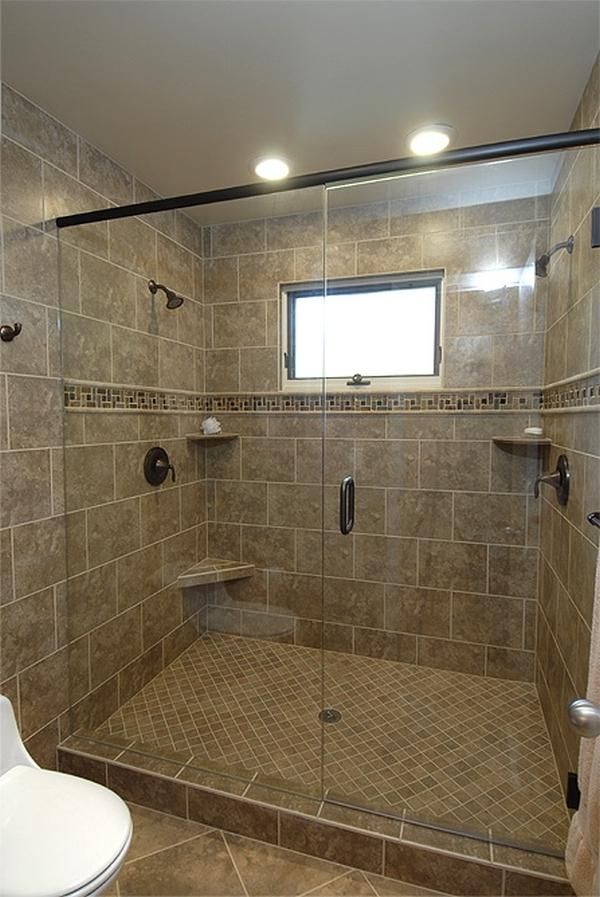 Finishing materials in bright colors will be appropriate in a minimal amount, for example, as a decor, or to focus on certain elements of the interior. nine0003
Finishing materials in bright colors will be appropriate in a minimal amount, for example, as a decor, or to focus on certain elements of the interior. nine0003
5. Ready-made collections of designer tiles will greatly facilitate the task of selecting materials by color and style.
6. When buying facing materials, it is important to pay attention not only to its design, but also to its operational characteristics. Products must be of high quality, resistant to mechanical damage and temperature extremes, so there is no need to save on them. All the necessary information about the characteristics of the tile is placed by the manufacturer on its packaging.
Success stories
With the right approach, you can harmoniously combine 3 types of tiles at once - medium-sized rectangular, large square and small mosaics.
If you want to create a bright bathroom interior, you should not use only white color, it is better to complement it with light gray tones.
A small square bathroom can be visually enlarged by laying rectangular tiles vertically, both on the walls and on the floor.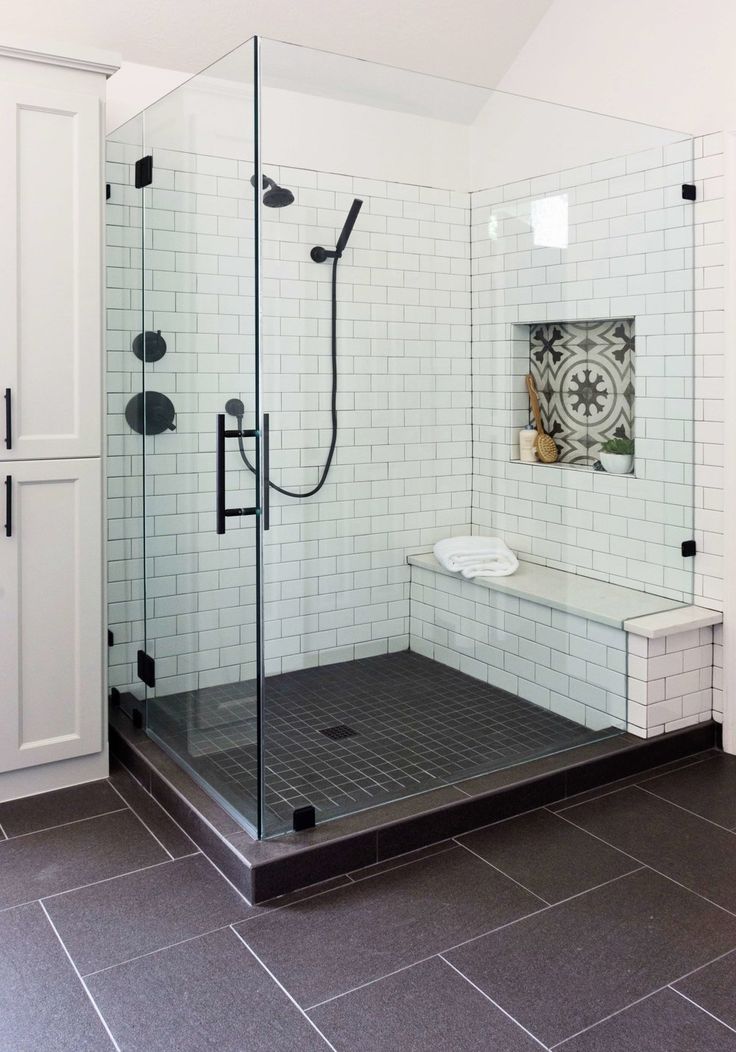
The interior in blue tones is perfectly complemented by floor tiles imitating marble. nine0003
Small Bathroom Tiles + 150 PHOTO
Small Bathroom Tiles
Do you want to know how small bathroom tiles are used? Photo design of finished projects will reveal secrets. About everything in more detail later in the article.
Content:
- Material Features
- Large Scale or Small
- Texture Features
- Perfect Colors
- TOP 10 Successful Solutions for a Small Bathroom
- Relief and ornament - creative and stylish
- Mosaic - room for decor
- Selection guide
- PHOTO GALLERY: Best design solutions for a small bathroom
Material features
Ceramic finishing material is practical, unpretentious in maintenance and resistant to moisture.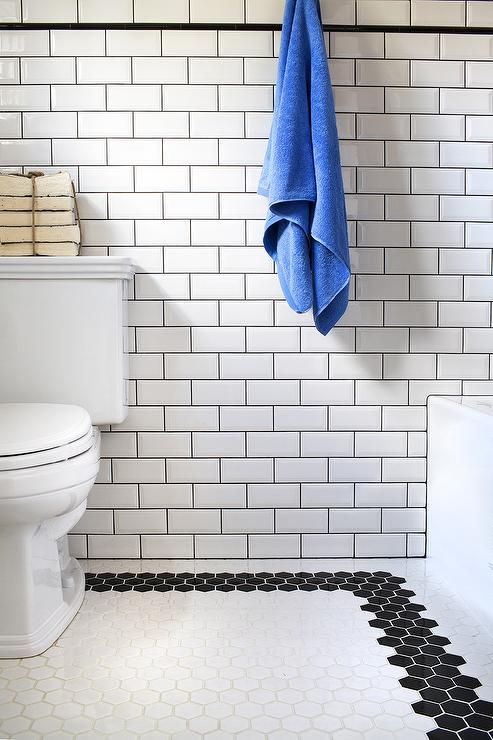 Models of tiles differ not only in color, texture, but also in size. This allows you to use the material for facing the room. nine0003
Models of tiles differ not only in color, texture, but also in size. This allows you to use the material for facing the room. nine0003
Ceramics – one of the materials for wall decoration
Decorating techniques can visually enhance the atmosphere of even the smallest space. At the same time, the original design will increase the degree of comfort. Therefore, when choosing a material for facing a small bathroom, it is necessary to take into account:
- colors;
- invoice;
- quality characteristics;
- size;
- efficient use with different installation methods. nine0014
Choose different textures, textures and colors for your bathroom
It will interest you: OVERVIEW: Bathroom tile panel options: 185+ (Photo) Wall options
Read also: Children's room design for a little girl and a teenager from 3 to 16 years old + 150 PHOTOS Memorable interiorsLarge-scale or small
Stylish designs dispel the myth that it is not rational to use large-sized tiles for lining small rooms.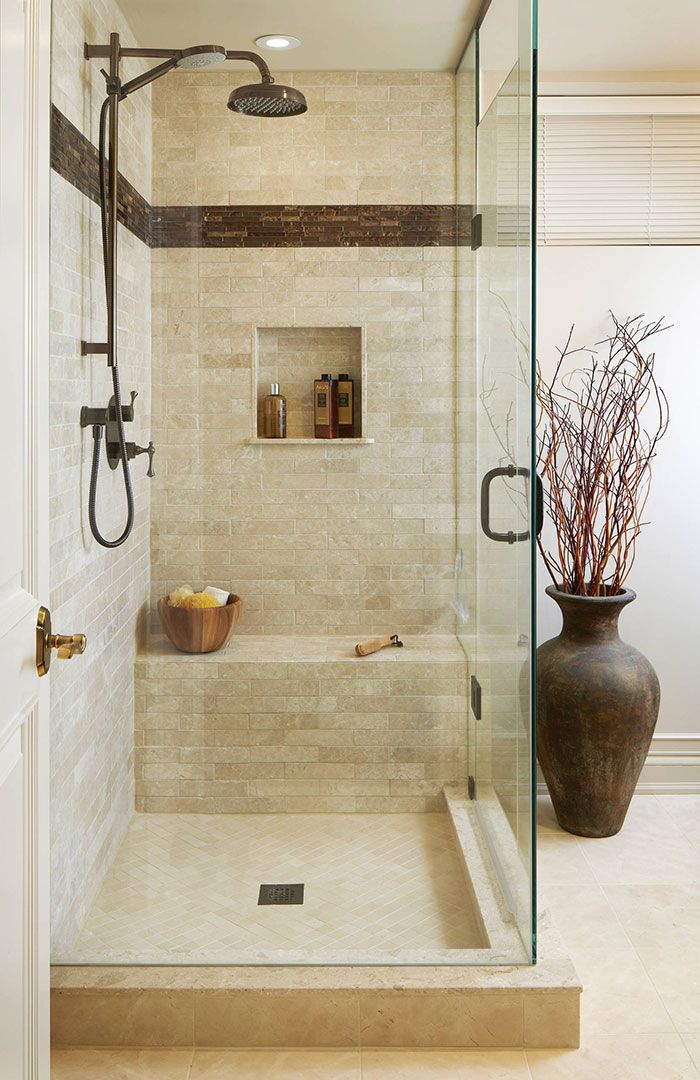 By correctly positioning the tiles, you can visually add volume to the room. Just do not decorate the entire surface with it. nine0003
By correctly positioning the tiles, you can visually add volume to the room. Just do not decorate the entire surface with it. nine0003
Give volume to the room with tiles
An excellent option would be to lay vertical stripes of large rectangles or squares in the center of a large wall. A 20x50 cm tile with an ornament on the floor in the center of the room will create the illusion of carpeting.
Large rectangles in the center of the wall
Unusual tiles to create a cozy bathroom
Using large tiles to decorate a small bathroom is possible, but difficult, so medium and small sizes are considered the most suitable:
1models 10x10 cm fit the design, but it should be remembered that the dark scale visually "eats" the real dimensions, it looks a little gloomy;
Models 10x10 cm match design
2 The perception of 20x20 cm squares is hardly affected by their shade or design, the main role is played by the visual impression;
Visual impression with a size of 20x20
3mosaic allows you to create original ornaments of various options, but requires an accurate calculation.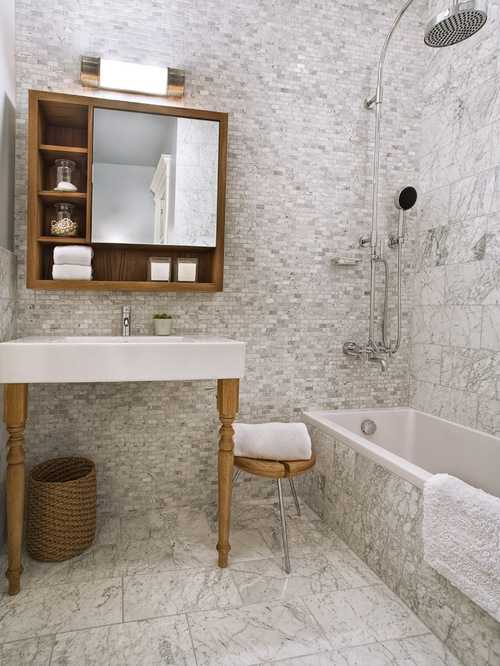 nine0003
nine0003
Original mosaic panel
It is believed that the correct size and shape give a more pronounced effect of increasing the volume of space than the color palette. If the bathroom is narrow, the large size of the tile will reduce the number of conditional lines and create a visual effect of spaciousness.
The effect of increasing space due to tiles of the correct form
The optimal size of tiles for a rectangular bathroom of modest size are rectangles of 20 by 30 cm, and for a square - 20 by 20 cm.
Optimum size for tiles 20 x 30 cm
It will interest you: OVERVIEW: Finishing the bathroom with artificial stone: Washbasin, countertop, shelves. Features of using material
See also: Design of a small bathroom combined with a toilet. TOP-12 techniques for unique space correction + 50 PHOTOFeatures of texture
Modern ceramics are diverse not only in size, decor, but also in the texture of the front surface. There are tiles only for wall or floor cladding, universal models that are suitable for both coverings.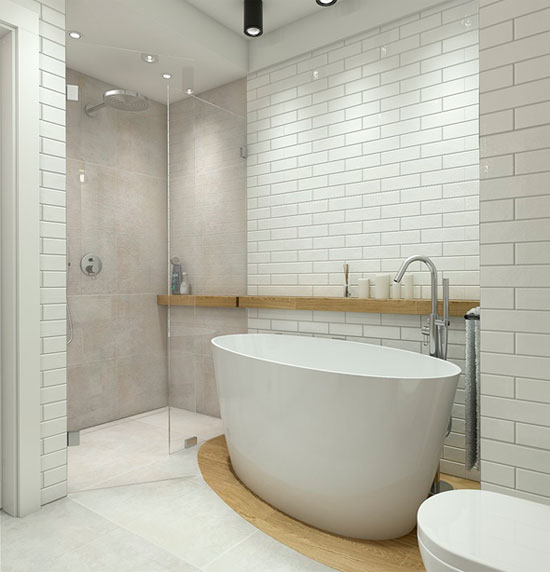 Products with a surface are presented:
Products with a surface are presented:
1 glazed;
2 unglazed;
3gloss;
4matt.
Shiny for small spaces. Gloss contributes to the visual increase in space. The glazed surface is easy to clean and wash.
Also available. Therefore, an option for a small room would be a tile with two layers of glaze and small bulges. Such a surface looks very original.
Glitter for small spaces
Glass and mirror materials will require more frequent cleaning, but in combination with other materials they will give the atmosphere lightness, airiness, spaciousness.
Glass for the airiness of the interior
It will be interesting to you: OVERVIEW: Bathroom furniture: Features of choosing Washbasins with a cabinet - how not to make a mistake? (190+ Photos)
See also: Ceramic tile for backsplash in the kitchen. Modern design and expert advice + 180 PHOTOSPerfect colors
The color scheme sets not only the direction of the design of a modest bathroom, but also allows you to add volume and airiness to it.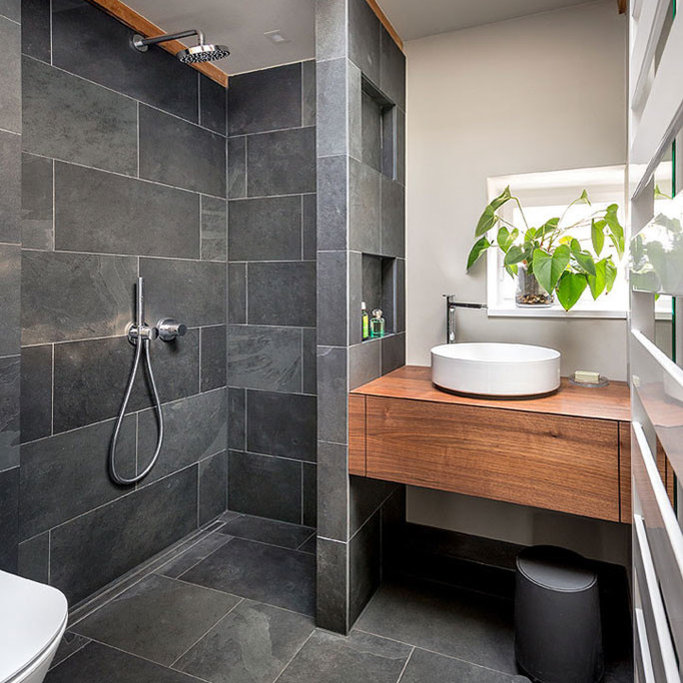 The darker the shades, the smaller the small room seems. A similar reaction occurs with sharp color contrasts.
The darker the shades, the smaller the small room seems. A similar reaction occurs with sharp color contrasts.
Sharp color contrasts to enlarge the room
Tiles for small bathrooms are preferable to light colors. At the same time, it should be remembered that light shades are also divided into categories:
1Warm.
Warm color when choosing design
2 Cold.
Light but cool shade in the bathroom
3 Neutral.
Neutral shades in the bathroom
4Achromatic.
Shades from deep black to white
It will be interesting to you: OVERVIEW: Options for finishing the Bathroom with Tiles (175+ Photos). Create a design that will be remembered
Warm shades
Trendy warm colors include:
1Bright yellow.
Yellowish shades in bathroom elements and decor
2 Peach.
Natural shades in your bathroom
3 Sand.
Trendy sand for bathroom walls
4 Beige.
Elegant beige wall decoration
The combination of several tones of this range looks impressive, preferably with a horizontal delimitation of the color palette. The expansion of space is facilitated by the location at the top and bottom of dark narrow stripes that do not change the predominance of the background of the light palette. nine0003
Several tricks for a successful expansion of space
If you want to visually "raise" the ceiling of the room, it is important to design narrow vertical stripes on both sides of the wall. A combination of these two methods is not excluded.
Lines in the center of the wall will help to raise the ceiling
Dark color inserts are used to highlight a certain section of the wall. This illusory approximates the selected part.
Highlight the wall with dark inserts
Following tradition
Bathrooms are traditionally clad in shades of blue and light purple, which are cold types, or neutral tones of white and light gray, which do not affect the feeling of warmth.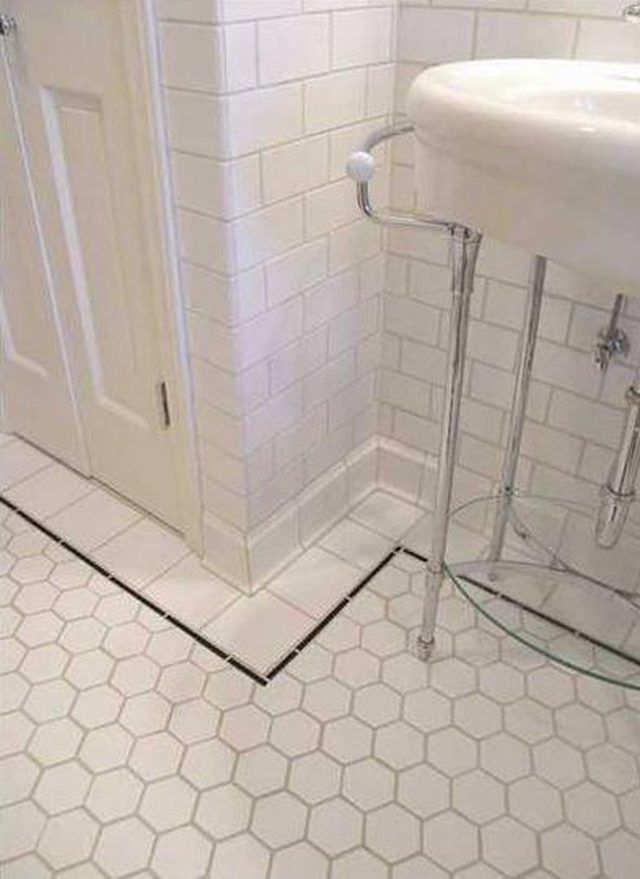
The achromatic palette includes shades:
1 Pink.
Pale pink bathroom
2 Lilac.
Lilac shades for comfort
3Green.
Greenish shades in harmony with white
They do not contribute to any unambiguous sensations, but awaken a purely individual perception of the scale.
Modern solutions include tiles with texture imitation of metal, wood, stone, paper.
Imitation of wood in wall tiling
Dilute white tiles with bright accents It would be a mistake to tile a small bathroom with only white tiles. Excess whiteness will make the interior boring, similar to a medical facility. In addition, in this way it is impossible to achieve the effect of expanding space. White color will only enhance the illumination of the space. But it looks great in combination with other light surfaces: 1terracotta; Expansion effect with terracotta 2 pearl grey; Light solution for a small bathroom 3 light blue or light blue; Blue color in the design of the bathroom 4 muted green or light green; Muted green in the interior of the bathroom 5 light yellow or pale lemon; Yellow shades even in the bathroom decor 6 peach; Peach colors in a classic bathroom 7lavender; 8 sand. Neutral sand for comfort and relaxation Muted navy blue or marsala tiles will add depth to the design without negatively impacting the room's geometric feel. Inclusions of not only monophonic elements, but also with a pattern will help to revitalize the interior. Randomly arranged vertical stripes and borders add creativity to the atmosphere. Dark blue shades add depth to the design You may be interested in: REVIEW: Design and decoration of the bathroom with plastic panels 110+ Photo - A quick and cheap way to decorate If you want to decorate a small bathroom with two-color tiles, you need to choose elements that do not contrast, but complement each other. The main thing is the predominance of light shades. Winning combinations: Pink with pale purple - as one of the options in the interior To combine bright and unusual shades on a light background, the following combination options: Muted orange and purple in the bathroom interior A small pattern on the elements of a contrasting shade will add sophistication and grace to the design. Any style suits a small bathroom. Can be emphasized with shades: Blue and white - Mediterranean style 1 Blue walls are perfectly complemented by marble-like tiles on the floor. Marble floor 2 Glass mosaics on the walls and fine ceramics on the floor. Glass mosaic on the bathroom walls 3The floor and the lower level of the walls of the same color will create a bottomless effect. Same color floor and walls 4Wall to wall mirrored surface masks the dimensions of the space. Bathroom mirror 5 Mint green walls combined with white fixtures give the atmosphere a fresh effect. Mint tile 6 Black painting part of the ceiling and walls in black creates the illusion of infinity in the room. Black and white bathroom 7Using a background tile in two light colors with mosaics in a similar range unites a small area, neutralizing clutter. Bright bathroom with mosaics 8The mirror in the frame opposite the glass door of the shower cabin “dissolves” the walls. nine0003 Glass shower cabin in tandem with a mirror 9 Walls lined with white ceramics look organic in combination with imitation wood on the floor. Imitation wood in the bathroom 10Two red opposite walls give the space of a miniature room an imaginary depth. Two red walls in the bathroom Decorative accents enliven the design, create a sense of completeness of the image. In a small bathroom, this task is handled by: Patterned borders in your bathroom The number of compositions is minimal. They should complement the decor, but not stand out from a single concept. Shiny particles of gold and silver enhance the attractiveness. nine0003 The use of embossed elements, especially models with a 3D effect, creates the ultimate expansion effect, but only when decorating small areas of the wall. Embossed tiles on the entire surface will cause the opposite reaction. Embossed with 3D effect Drawings or ornaments on the tile floor give personality to the environment, but a small bathroom will look smaller if it is decorated with large colorful panels. Ornament for individuality of design The surface of light tiles on top with tiles a tone darker below, divided horizontally by a decorative pattern, looks stylish. And at any level. The room seems wider and more spacious. When multi-color solutions, it is preferable to use mosaics. Better single color or neutral colors. For its production, ceramics with a porous structure, glass, smalt, and less often metal are used. And for flooring - granite, marble, sometimes jasper. nine0003 Mosaic elements for multicolor solutions Miniature size is the advantage of this cladding material. It allows you to lay mosaics in hard-to-reach places, for example, rounded shapes. The advantage of the mosaic is its small size The advantage is the multitude of forms. The multi-angled format expands the possibilities of creativity, goes well with tiles. Mosaic in the form of accents adds sophistication and originality to the setting. Many mosaic ornaments created in past centuries have survived to this day, which testifies to the durability of such cladding. Mosaic in the form of an accent To decorate a small bathroom, choosing a tile is not an easy question. Before buying, you should listen to the recommendations of experienced designers: 1For most of the room, purchase light-colored tiles so that the decor contributes to the visual expansion of the space. Dark-colored tiles should be laid at the bottom of the walls or on the floor. Light tile to expand the visual space 2 The glossy surface of the elements has a mirror property, so it adds airiness and light to the room. But on shiny dark surfaces there are traces of water. Carefully choose dark surfaces Choose quality materials 3Themed collections make your decision easier. Browse thematic collections 1For the walls of small bathrooms, it is appropriate to lay square tiles directly without offset in rows. 2On the floor, the half-size mixing method or the diagonal layout allows an illusory increase in space. Diagonal layout on the floor 3 Placement of rectangular elements on the walls vertically “stretches” the height. Horizontal arrangement - expands the surface, but reduces the level of the ceiling. nine0003 Vertical tiling stretches ceiling height Small bathroom layout options 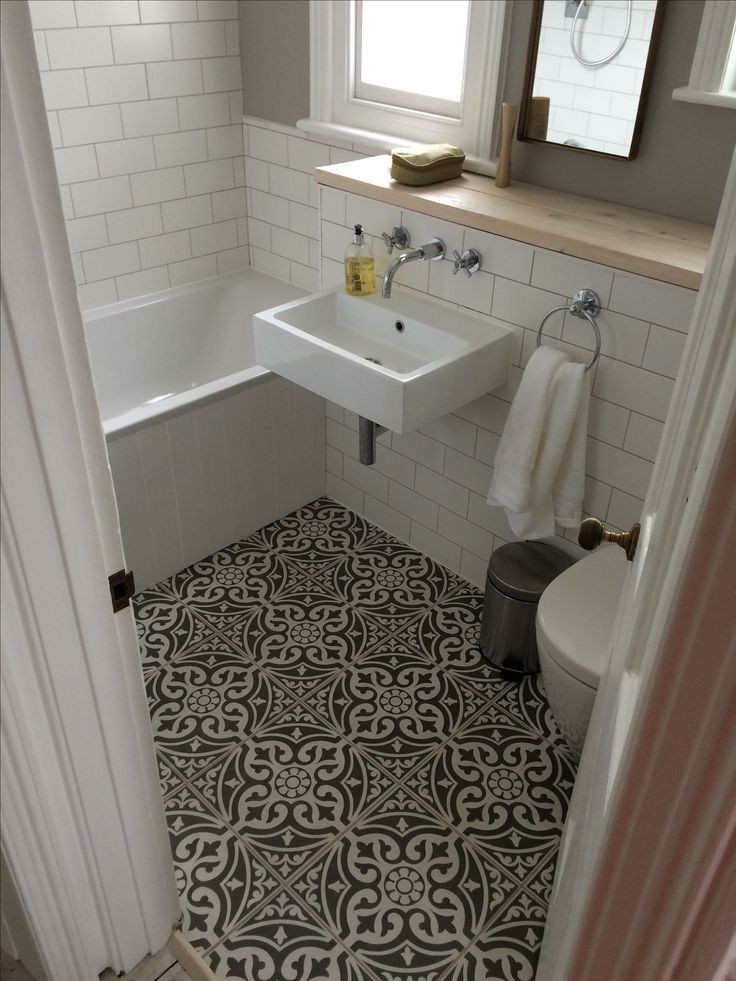 nine0003
nine0003 Optimal combinations
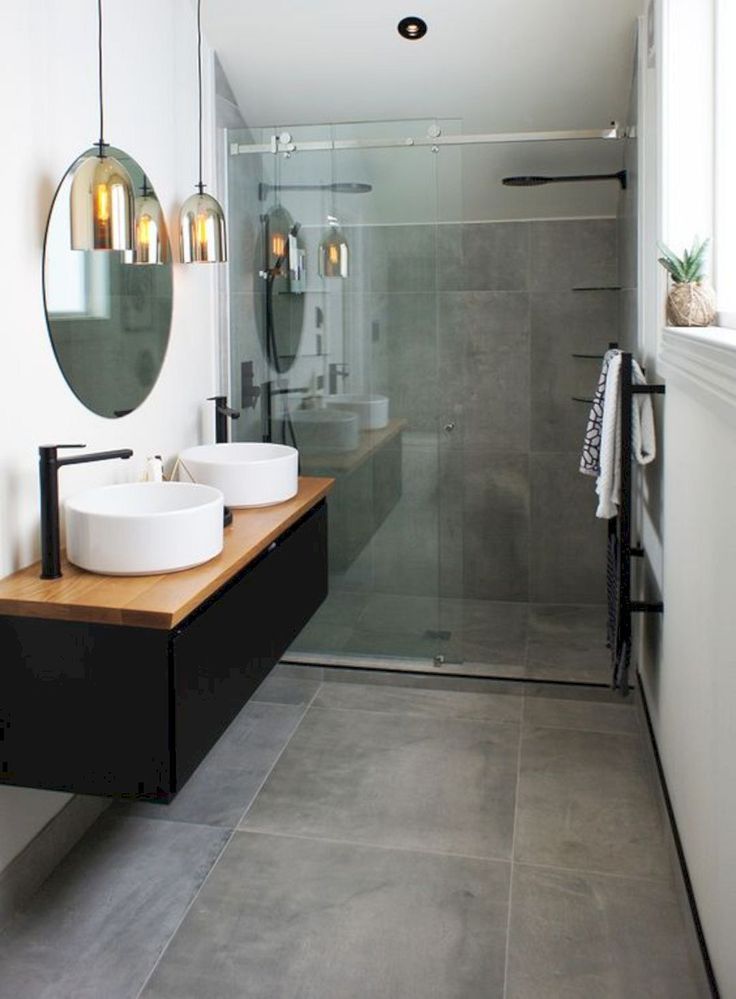
A tint that enhances style
TOP 10 successful solutions for a small bathroom
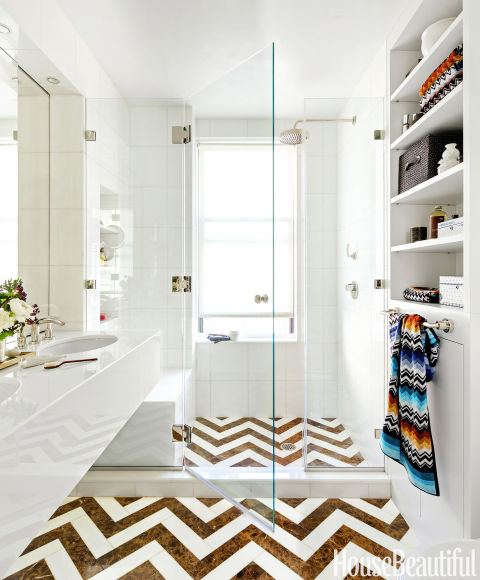
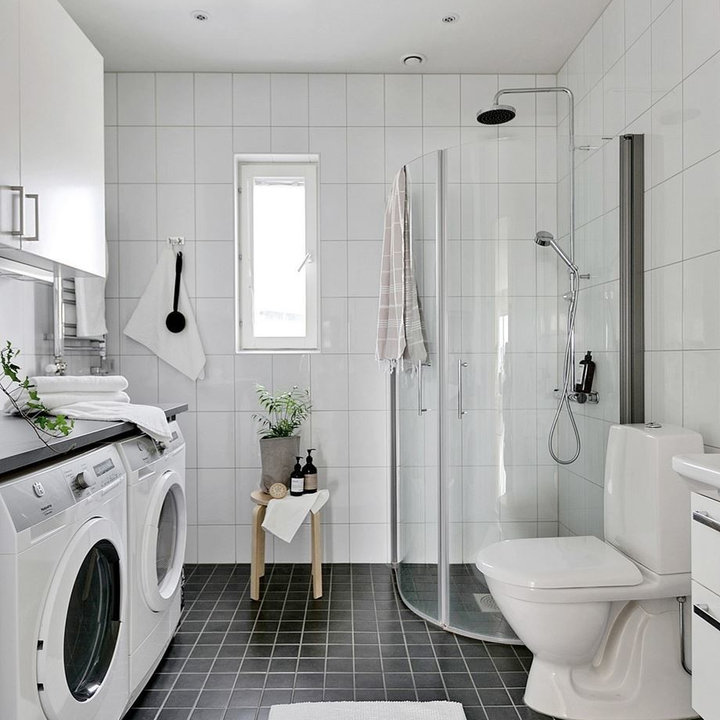 TOP 7 interior applications + 165 PHOTO
TOP 7 interior applications + 165 PHOTO Relief and ornament - creative and stylish
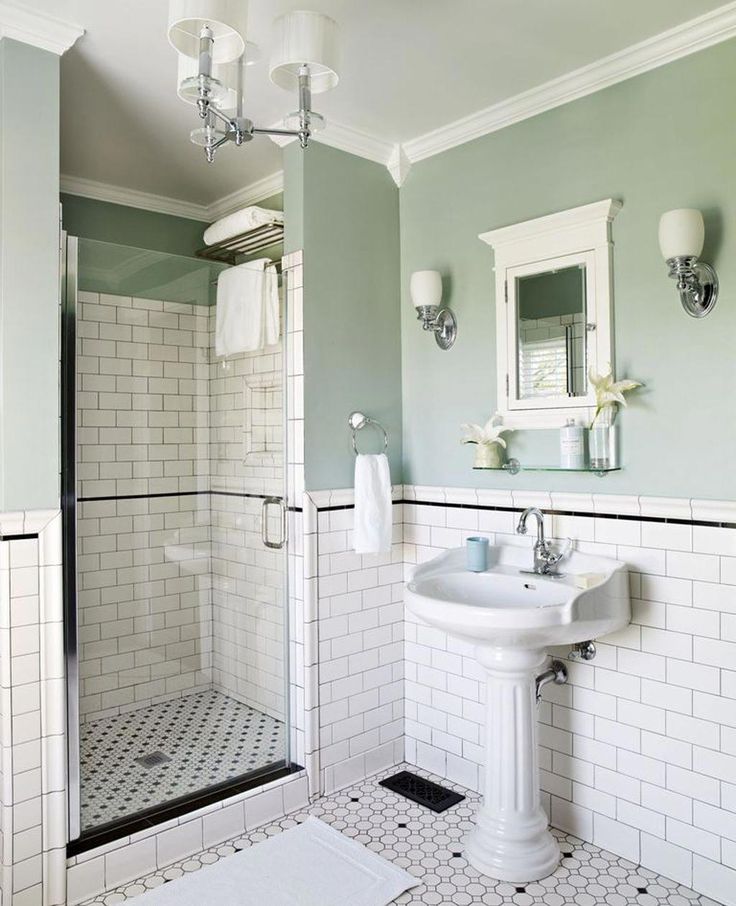 In such a room, a dim image of tiles that are the same as the size of the main cladding is relevant. It is preferable to place not a picture on the wall, but small patterns on each segment of the material. nine0003
In such a room, a dim image of tiles that are the same as the size of the main cladding is relevant. It is preferable to place not a picture on the wall, but small patterns on each segment of the material. nine0003 Mosaic - room for decoration
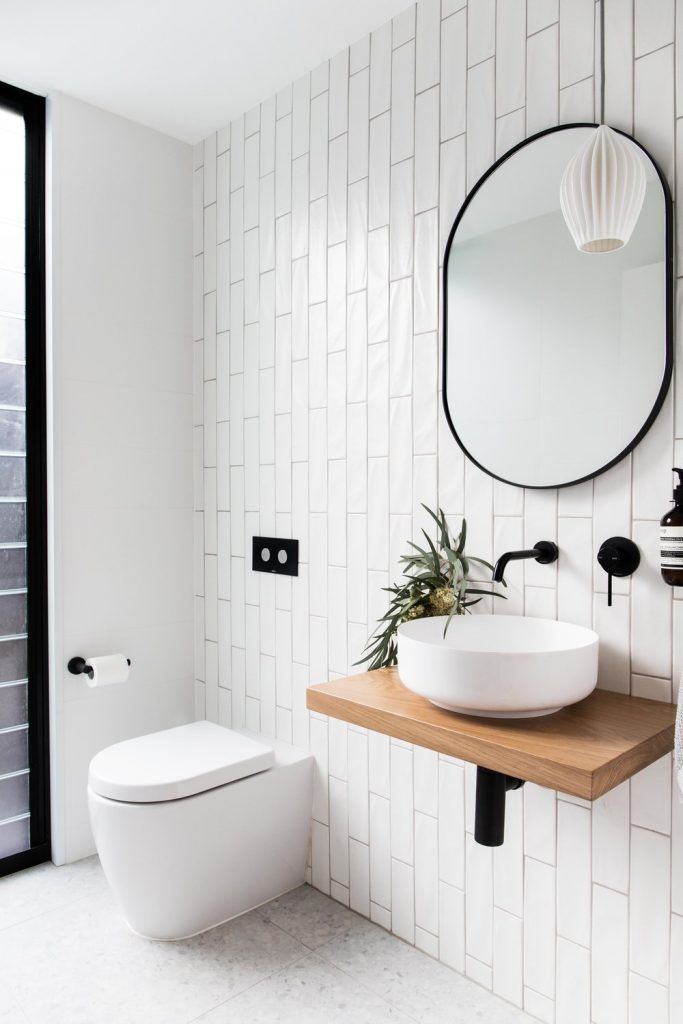 This is a definite plus for decorating a small bathroom, where there are a lot of bizarre curves.
This is a definite plus for decorating a small bathroom, where there are a lot of bizarre curves. Recommendations for choosing

TOP 3 laying system secrets
VIDEO: Bathroom design